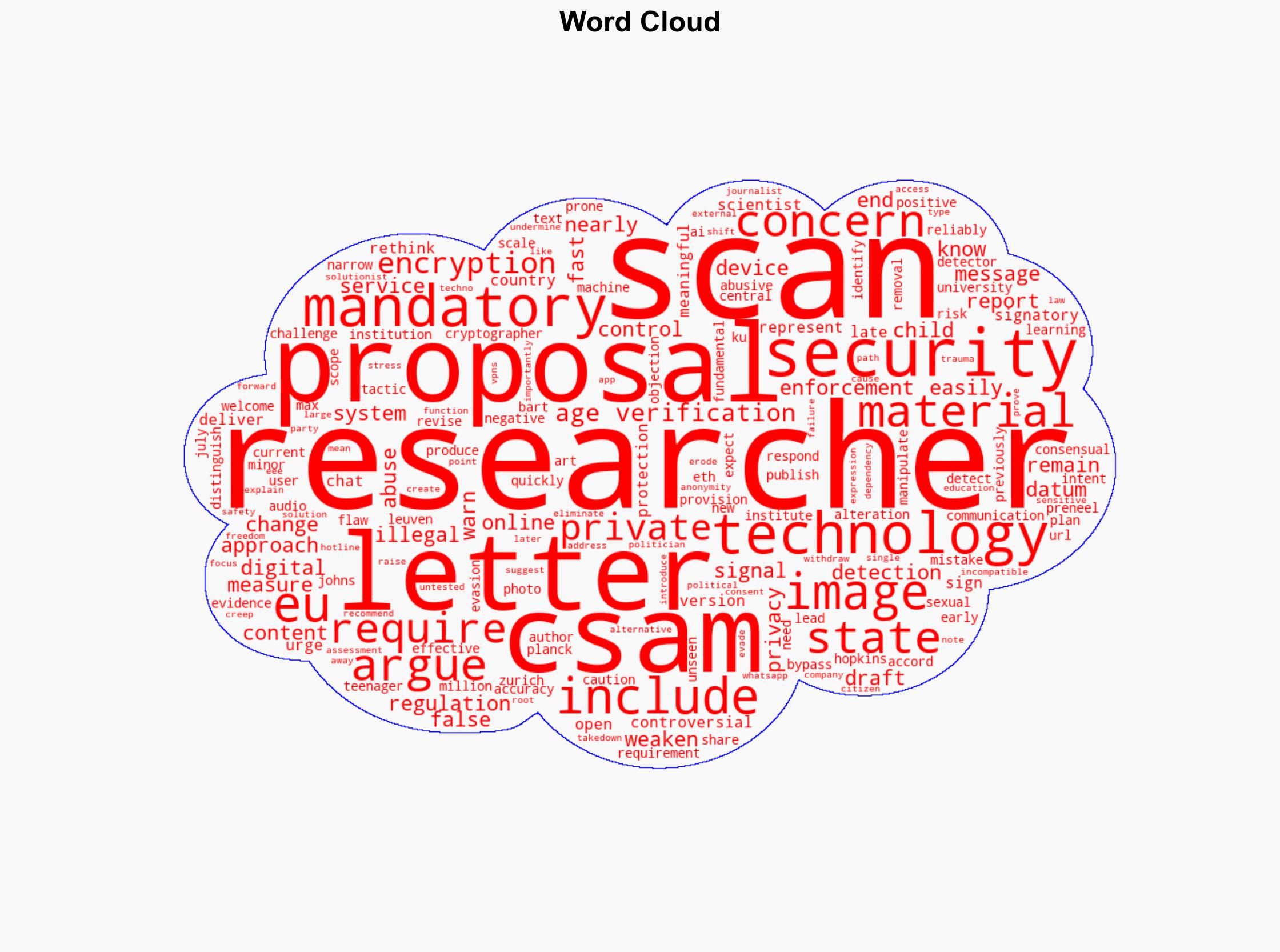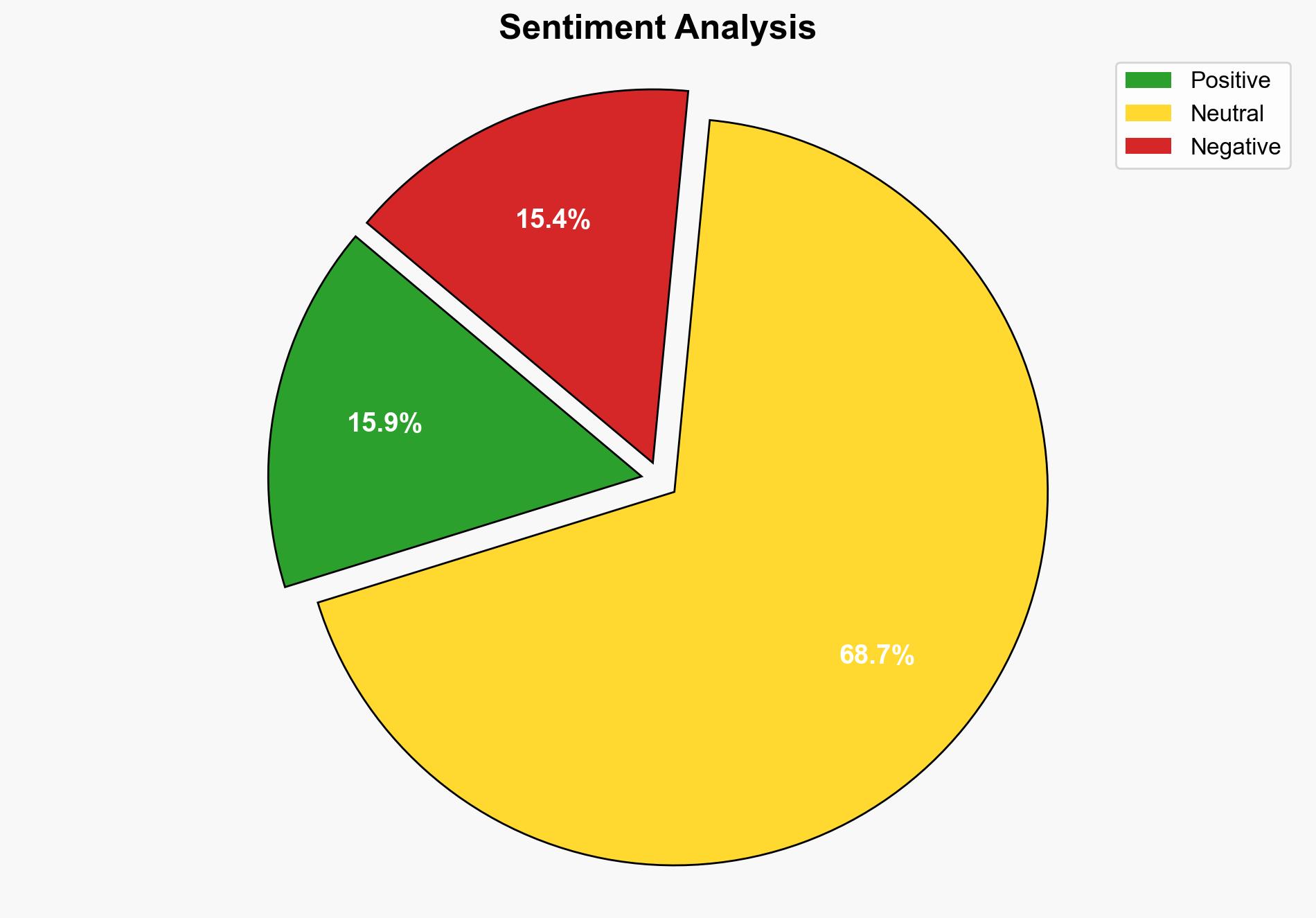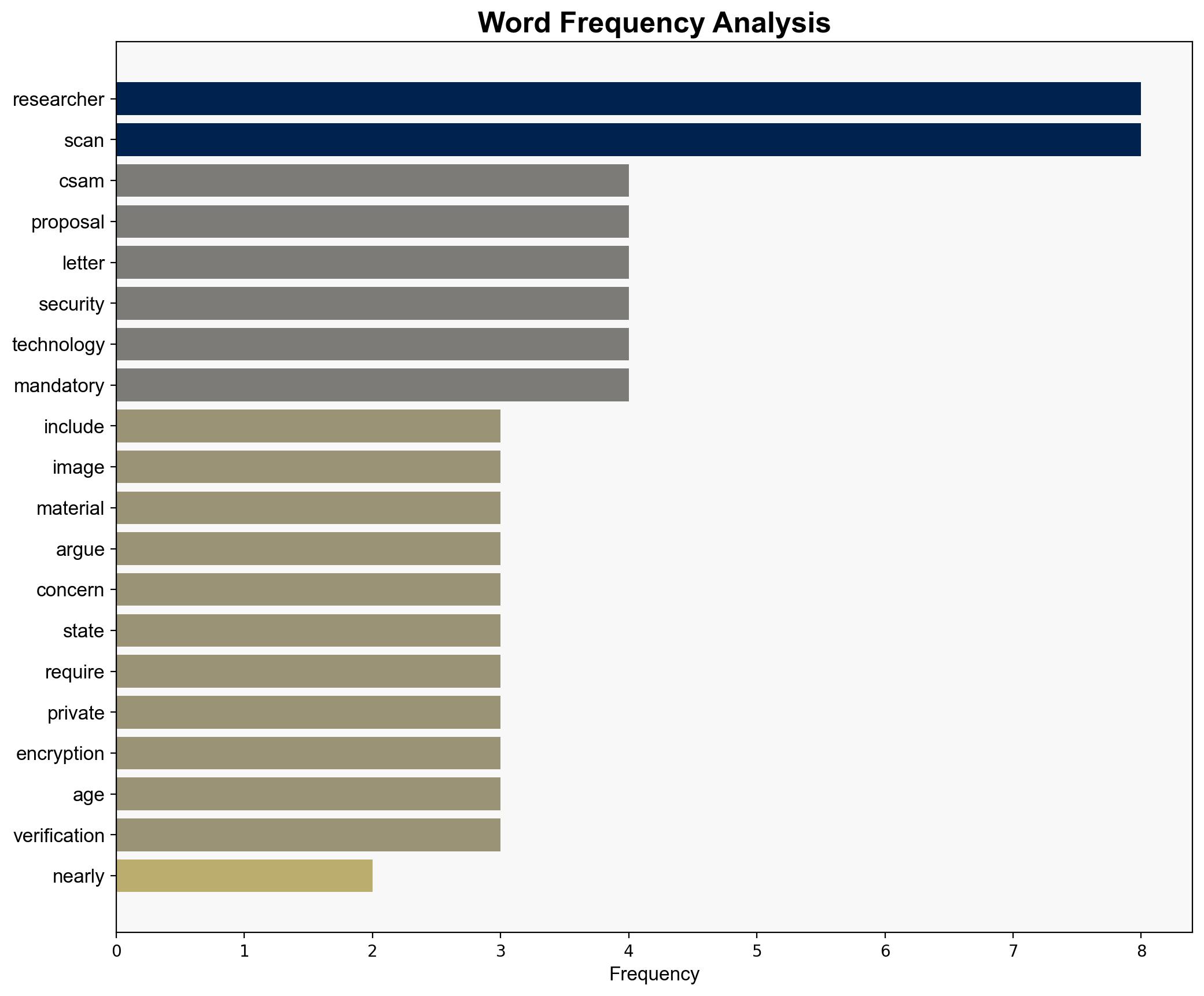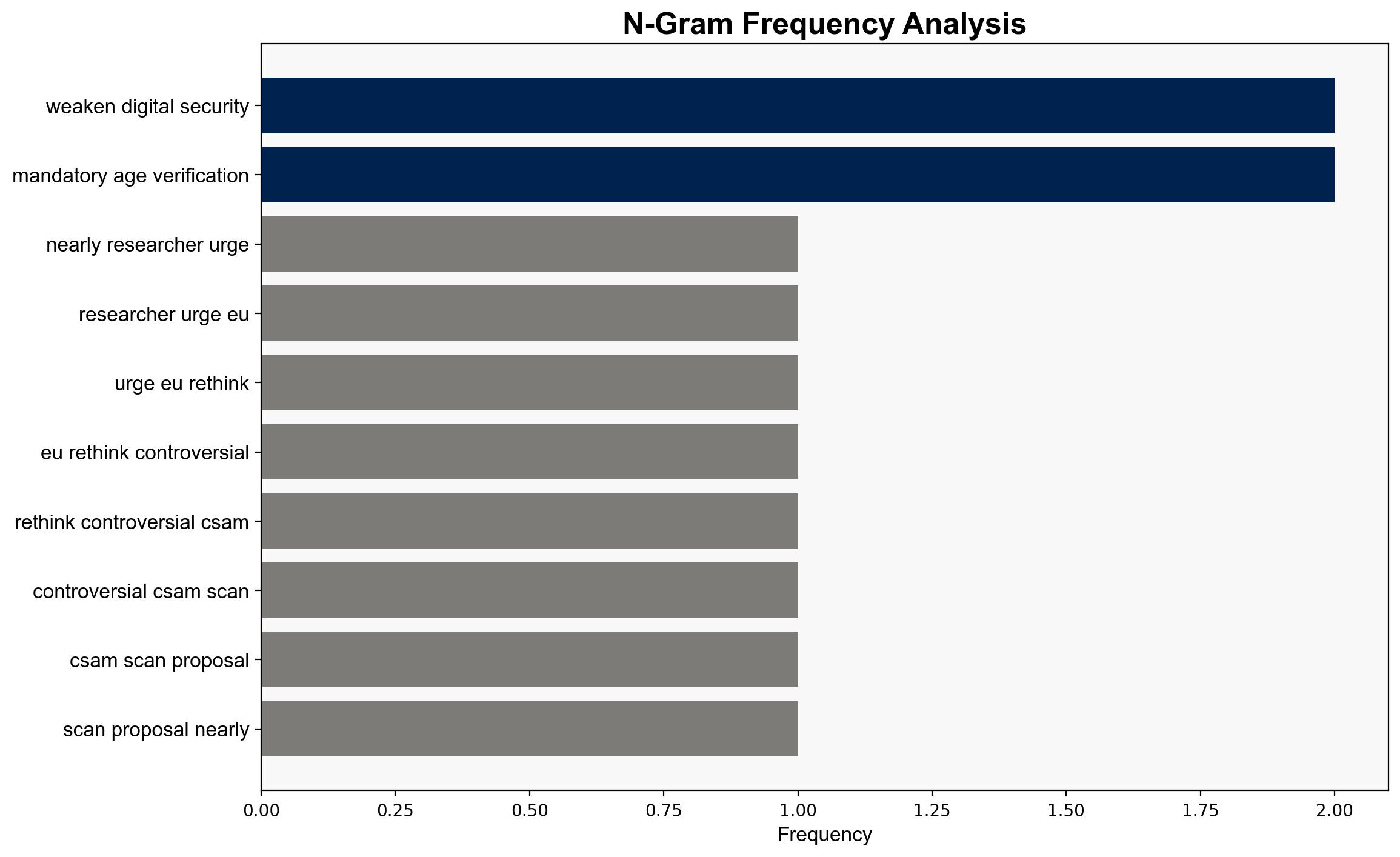Nearly 500 researchers urge EU to rethink controversial CSAM scanning proposal – Help Net Security
Published on: 2025-09-09
Intelligence Report: Nearly 500 researchers urge EU to rethink controversial CSAM scanning proposal – Help Net Security
1. BLUF (Bottom Line Up Front)
The most supported hypothesis is that the EU’s CSAM scanning proposal may undermine digital security and privacy without effectively protecting children. Confidence in this assessment is moderate, given the technical critiques and potential for unintended consequences. It is recommended that the EU consider alternative measures that address root causes of abuse while maintaining digital security.
2. Competing Hypotheses
1. **Hypothesis A**: The EU’s CSAM scanning proposal will enhance child protection by effectively identifying and removing illegal content, despite concerns over digital security.
2. **Hypothesis B**: The proposal will weaken digital security and privacy without significantly improving child protection, due to technical limitations and potential for misuse.
Using ACH 2.0, Hypothesis B is better supported by the evidence, as researchers highlight the technical flaws and risks of false positives/negatives, as well as the potential for evasion and privacy breaches.
3. Key Assumptions and Red Flags
– **Assumptions**: Hypothesis A assumes that technological solutions can be effectively implemented without significant error rates. Hypothesis B assumes that current technology cannot reliably detect CSAM without compromising security.
– **Red Flags**: Lack of empirical data supporting the effectiveness of the proposed scanning technology. Potential bias in underestimating the adaptability of malicious actors.
– **Blind Spots**: The proposal’s impact on non-EU countries using similar technologies and the long-term implications for global digital privacy standards.
4. Implications and Strategic Risks
– **Digital Security**: Mandatory scanning could create vulnerabilities in encryption, exposing users to broader cyber threats.
– **Privacy**: Erosion of privacy could lead to decreased trust in digital communications, affecting economic and social interactions.
– **Geopolitical**: EU’s stance may influence global norms on digital privacy and security, potentially leading to regulatory fragmentation.
– **Psychological**: Public backlash against perceived overreach could undermine trust in governmental institutions.
5. Recommendations and Outlook
- **Mitigation**: Develop and implement alternative measures focusing on education, online safety, and rapid content takedown.
- **Best Case Scenario**: Adoption of a balanced approach that enhances child protection while preserving digital security.
- **Worst Case Scenario**: Implementation of the proposal leads to widespread privacy breaches and loss of trust in digital platforms.
- **Most Likely Scenario**: Continued debate and revision of the proposal, with potential delays in implementation.
6. Key Individuals and Entities
– Bart Preneel
– Institutions: KU Leuven, ETH Zurich, Johns Hopkins University, Max Planck Institute
7. Thematic Tags
national security threats, cybersecurity, privacy, digital policy, EU regulation





